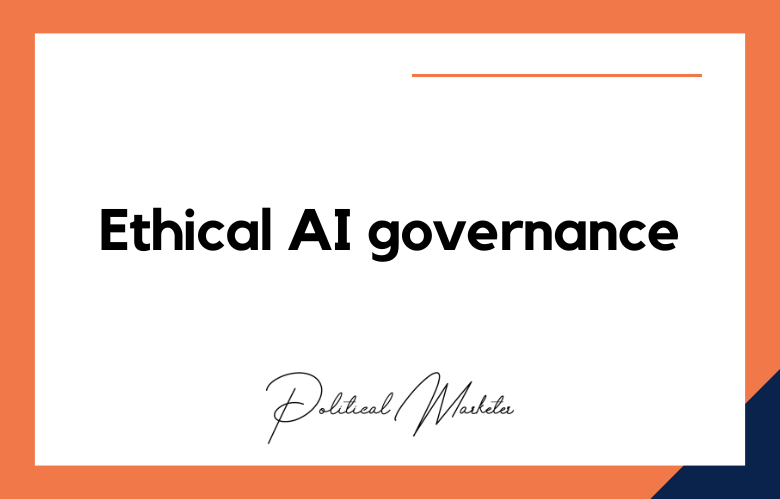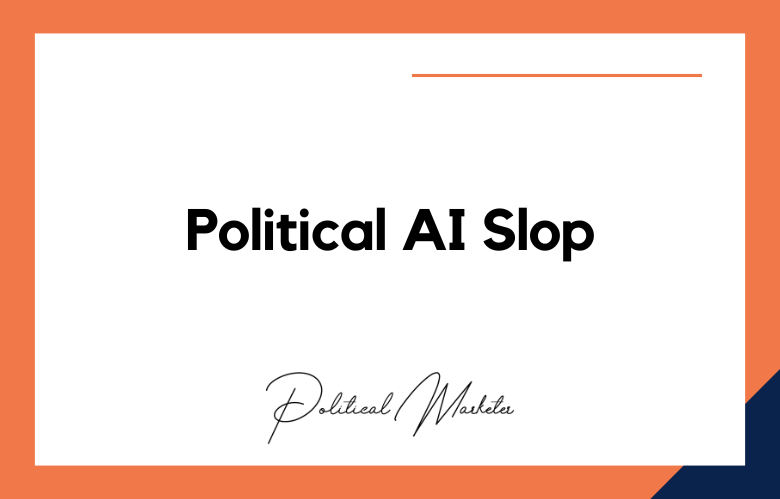In a democracy, the voice of the people counts a lot. Hence, understanding their sentiments can help politicians and authorities make more informed decisions. The question is how we can gauge the sentiment of voters. In the age of social media, news platforms, and online forums, monitoring media platforms can help gauge the pulse of the voters. We will discuss how media monitoring can help interpret voter sentiment and how it can be applied in politics.
Social Media Monitoring:
Social media platforms such as Twitter, Facebook, and Instagram offer a treasure trove of information about voter sentiment. We can understand public opinion by monitoring keywords related to politics, politicians, and elections. Sentiment analysis tools that rely on Natural Language Processing (NLP) can help understand the sentiment of posts associated with a particular theme. Real-time monitoring of social media can provide insights into the ongoing trends, which can be helpful for politicians and election strategists.
News Monitoring:
News monitoring is another way to interpret voter sentiment. News media reflects public opinions, and monitoring various news outlets can provide an overall picture of the general mood. Traditional news media, such as newspapers and TV news channels, still significantly shape public opinion. By keeping tabs on a particular candidate’s positive and negative coverage, we can understand their impact on voters.
Online Forum Monitoring:
Online forums such as Reddit, Quora, and Yahoo Answers are another source of information on voter sentiment. Millions of people turn to forums to discuss political matters, and forum data can provide insights into the views and opinions of voters. By monitoring threads related to politics and elections, we can understand popular opinions and even identify biases or fake news.
Geo-targeted Monitoring:
Political campaigns and elections happen regionally, and voter sentiment varies by location. Geo-targeted monitoring can help understand local sentiment. For example, a particular party may have a higher approval rate in one region than another. By monitoring the social media, news outlets, and forums specific to an area, politicians can frame their campaigns according to the public sentiment of that region.
Real-time Monitoring and Alerts:
Real-time monitoring and alerts can provide valuable insights into the ongoing trends. Keyword alerts can notify campaign managers or politicians of the latest developments or sentiment changes. Alerts on the results and aftermath of a political campaign or election can help take necessary actions, such as acceptance speeches or cordial messages sent to followers or opponents.
Unlocking Voter Sentiment: Navigating Media’s Maze
Understanding voter sentiment is crucial for candidates and political parties in today’s political landscape. However, with the rise of social media and the 24-hour news cycle, navigating the maze of media coverage can be daunting. Unlocking voter sentiment requires a strategic approach that considers multiple factors, including demographic data, historical voting patterns, and current events.
One of the critical challenges facing political campaigns in the digital age is the sheer amount of information available to voters. With the proliferation of social media platforms and the rise of online news outlets, voters are exposed to a dizzying array of political messaging and news articles. As a result, political campaigns must be savvy about where and how they communicate their message, carefully choosing the channels that will most effectively reach their target audience.
Decoding the Political Puzzle: Analyzing Voter Sentiment via Media
Decoding the political puzzle to analyze voter sentiment via the media involves a complex and multi-faceted approach. To comprehensively understand the political landscape in any given election cycle, examining an array of factors is necessary.
Firstly, it is vital to consider the media sources through which voters receive information. The diversity of media channels available to citizens has increased in recent years, with cable news, social media, and traditional print news all playing a role in shaping public opinion. Different media sources’ reliability, objectivity, and bias must be considered when seeking to decode voter sentiment.
Media Mining: Unveiling Voter Sentiment Insights
Media Mining has emerged as a game-changing technology that enables us to extract valuable information and insights from vast amounts of unstructured and structured data available through various social media platforms. In the context of democratic processes, Media Mining helps unveil voter sentiment trends and patterns that can inform political campaign strategies.
In this regard, Media Mining involves using Natural Language Processing (NLP) techniques that make it possible to analyze political conversations and interactions on social media platforms. As such, it provides a window into people’s perceptions, opinions, and attitudes towards political parties, candidates, and their policy proposals.
Beyond Headlines: Understanding Voter Sentiment in the Digital Era
As the digital era shapes our society, we must understand how it has impacted voter sentiment. While headlines may give us a snapshot of how people feel about specific issues or candidates, it is essential to look beyond the surface-level reactions and delve deeper into the underlying motivations and attitudes driving voter behavior.
One factor to consider is the role of social media in shaping public opinion. With the rise of platforms like Twitter and Facebook, it has become easier than ever for individuals to share their views and connect with like-minded individuals.
This has led to online echo chambers, where people are only exposed to opinions that reinforce their own. Social media algorithms often prioritize sensational or controversial content over nuanced analyses, leading to a polarized and often uninformed online discourse.
The Media Mindreader: Monitoring and Interpreting Voter Sentiment
In today’s complex and dynamic political climate, it is increasingly vital for politicians and policymakers to understand and interpret voter sentiment. In response to this growing need, a new technology has emerged – the media mindreader. This innovative tool allows analysts to track and monitor public opinion across various media platforms, including social media, news outlets, and blogs.
One of the critical features of the media mindreader is its ability to process and interpret vast amounts of data in real-time. Using advanced algorithms and machine learning techniques, the system can identify key themes and trends in voter sentiment, allowing policymakers to respond to shifting public opinions and concerns.
Conclusion:
Media monitoring can help interpret voter sentiment, guide political campaigns, and enable politicians to make informed decisions. Social media monitoring, news monitoring, online forum monitoring, geo-targeted monitoring, and real-time monitoring are ways we can gather valuable insights.
By analyzing media data, we can understand the public mood, identify areas of improvement, and indulge in damage control. Media monitoring will play a vital role in designing election strategies and making political decisions as we approach the elections.
Call: +91 9848321284
Email: [email protected]
How can we monitor and Interpret Voter Sentiment Through Media?: FAQs
What Is Voter Sentiment Analysis In Political Campaigns?
Using media content, voter sentiment analysis gauges public opinion, emotions, and attitudes toward political figures or issues.
How Can Media Monitoring Tools Help Track Voter Sentiment?
Media monitoring tools collect and analyze data from news outlets, social media, and blogs to detect patterns in public opinion and emerging narratives.
Why Is It Important To Monitor Sentiment In Real Time?
Real-time sentiment tracking enables campaigns to respond quickly to negative trends, adjust messaging, and manage crises proactively.
What Are The Main Sources For Monitoring Voter Sentiment?
Sources include traditional media (TV, newspapers), digital media (news portals), and social media platforms like X (formerly Twitter), Facebook, and YouTube.
How Does Social Media Sentiment Differ From Traditional Media Analysis?
Social media sentiment is faster and often raw, while traditional media sentiment reflects more structured or editorialized viewpoints.
Can AI Tools Be Used For Sentiment Analysis In Political Campaigns?
Yes. AI-driven sentiment tools analyze text, images, and video to assess emotions, tone, and reactions in large media data sets.
What Role Do Hashtags Play In Tracking Voter Opinion?
Hashtags help identify trending topics, voter interests, and the emotional tone of political conversations across platforms.
How Can Sentiment Scores Be Interpreted For Actionable Insights?
Positive, neutral, or negative Sentiment scores help assess public mood and guide communication strategies, speeches, and responses.
Are There Tools To Compare Sentiment Between Candidates?
Yes. Comparative sentiment analysis tools can compare multiple candidates or issues to see who has a more favorable public perception.
What is the role of language and tone in sentimental interpretation?
Subtle variations in language, sarcasm, or emotional intensity must be accurately detected to avoid misjudging sentiment.
How Do Visual Media Like Memes Or Videos Reflect Voter Sentiment?
Visual content often reflects deeper emotional reactions, humor, or dissent, making video and meme analysis essential in modern sentiment tracking.
What Is The Impact Of News Bias On Sentiment Analysis?
Media bias can distort sentiment trends, so analyzing content from various outlets is vital to ensure balanced interpretation.
How Can Campaigns Use Sentiment Insights To Improve Messaging?
Campaigns can adjust tone, topics, and delivery based on voter emotional reactions, improving audience relevance and resonance.
What Is Geo-Specific Sentiment Tracking?
Analyzing sentiment in specific regions or constituencies to understand localized voter moods and concerns is the process.
Can Negative Sentiment Be Turned Into Opportunity?
Yes. By understanding the root of negative sentiment, campaigns can address concerns directly and reshape public perception.
How Often Should Voter Sentiment Be Monitored During A Campaign?
Sentiment should be tracked continuously, with daily or weekly reports depending on campaign scale and election proximity.
What Are Sentiment Heatmaps In Political Analytics?
Heatmaps visualize where sentiment is strongest (positive or negative), helping campaigns focus their outreach more effectively.
How Do Bots And Fake Accounts Skew Sentiment Data?
Bots can artificially inflate or distort public opinion. Advanced sentiment tools often filter such data to preserve accuracy.
How Can News Events Shift Voter Sentiment Rapidly?
Controversies, debates, or policy announcements can trigger sharp changes in sentiment that need immediate strategic responses.
What Metrics Complement Sentiment Analysis In Campaign Strategy?
Engagement rates, reach, share of voice, volume of mentions, and influence scores provide broader context for interpreting sentiment data.










